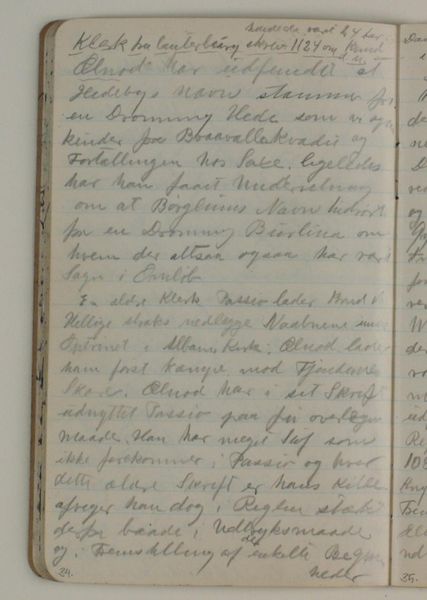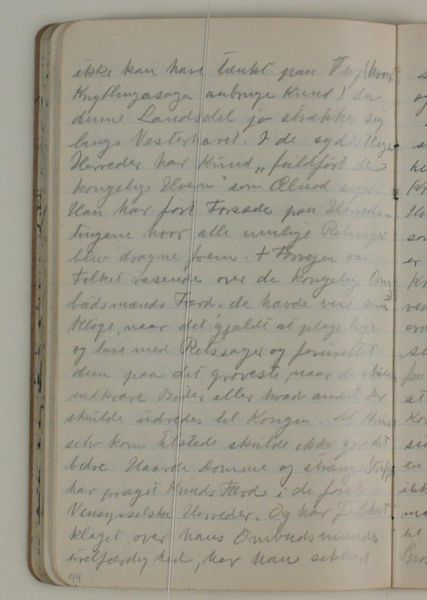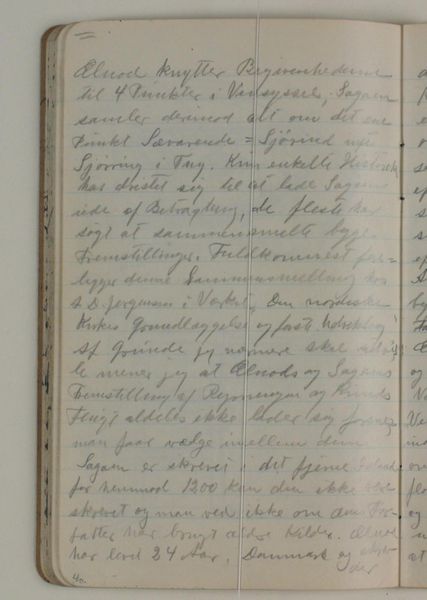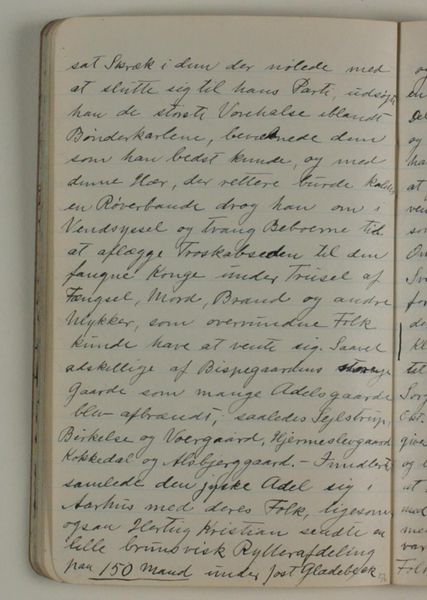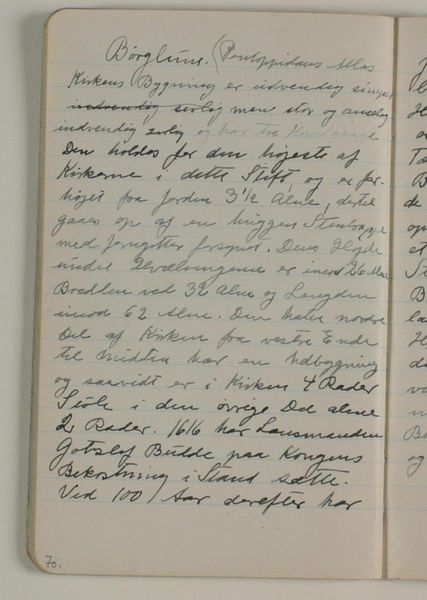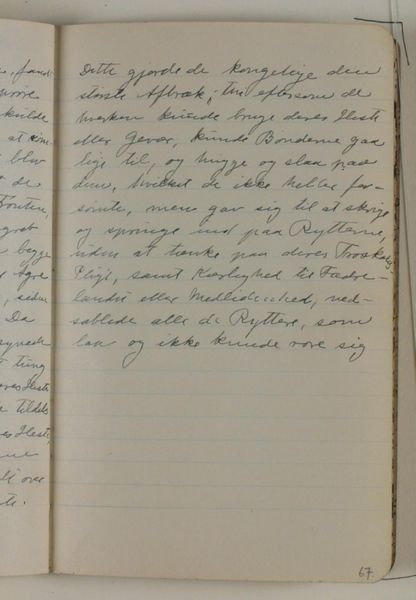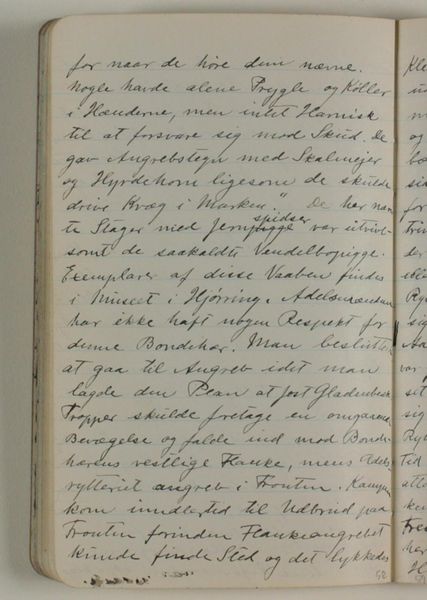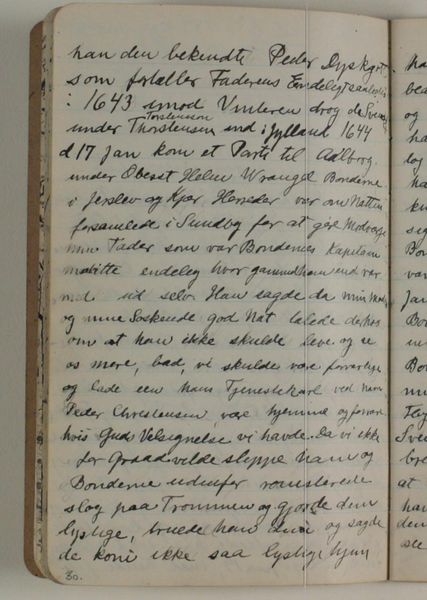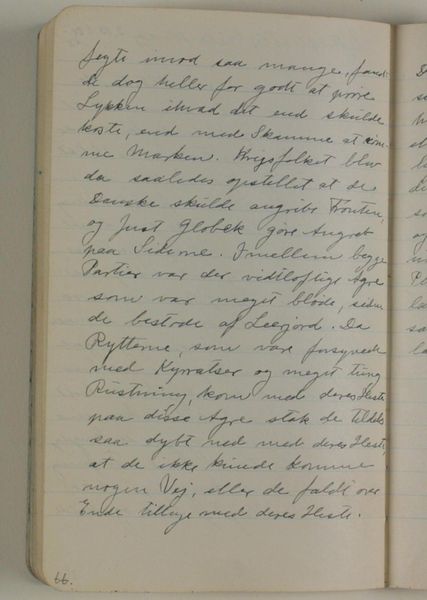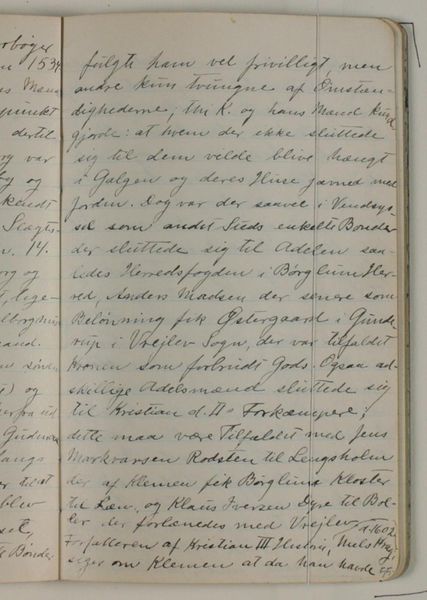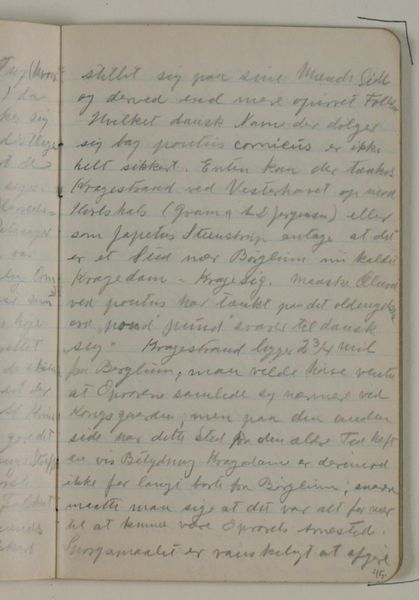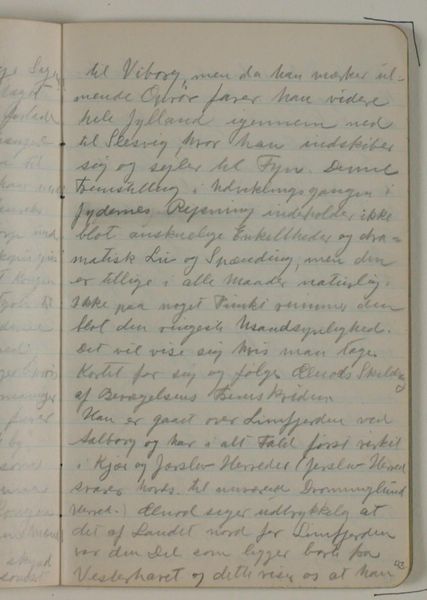
Notater vedrørende Ælnods saga om Knud den Helliges færd i Vendsyssel. Uddrag fra Historisk Tidsskrift, Hans Olrik 1933 - 1934
0:00
0:00
drawing, paper, ink
#
drawing
#
paper
#
ink
#
calligraphy
Dimensions: 175 mm (height) x 109 mm (width) (monteringsmaal), 175 mm (height) x 109 mm (width) (bladmaal)
Curator: At first glance, the dense script and aged paper create an almost palpable sense of history. It has a quiet intimacy. Editor: That's a sensitive initial response. The work before us is entitled "Notater vedrørende Ælnods saga om Knud den Helliges færd i Vendsyssel. Uddrag fra Historisk Tidsskrift, Hans Olrik," or, "Notes on Ælnod's saga on Knud the Holy's journey in Vendsyssel. Excerpt from Historical Journal, Hans Olrik," by Niels Larsen Stevns, created between 1933 and 1934. What draws you to it, formally? Curator: The composition itself—a rectangle filled with handwritten text in ink on paper—speaks to the labor involved, not just in its creation but in the historical record itself. Each stroke is evidence of someone's dedicated work. The artist is using drawing, in the service of history-making as he copies or perhaps studies an existing work, extracting segments of knowledge. Editor: You’re right; the visual rhythms of the calligraphy guide the eye, even if we can't decipher the Danish. See how the dark ink contrasts against the yellowed paper. It emphasizes its textural qualities, its almost fragile materiality. Consider too how that act of transcription you noted emphasizes the text’s structural importance. What function do you feel that serves here? Curator: Well, by re-writing it, he is also actively participating in interpreting history. Perhaps even solidifying a specific historical narrative or using historical accounts to convey his own societal concerns. Editor: It brings into question the relationship between handcraft, intellectual pursuit, and art-making. It pushes boundaries in fascinating ways, particularly with regard to consumption of cultural material. What are your closing thoughts about this small artwork from the collection of the SMK, the National Gallery of Denmark? Curator: Stevns challenges our notions about what constitutes historical evidence. He makes it intimate and almost tender, inviting us to consider the social process. Editor: It highlights the way historical meaning is communicated formally, materially, visually, and it resonates deeply.
Comments
No comments
Be the first to comment and join the conversation on the ultimate creative platform.
